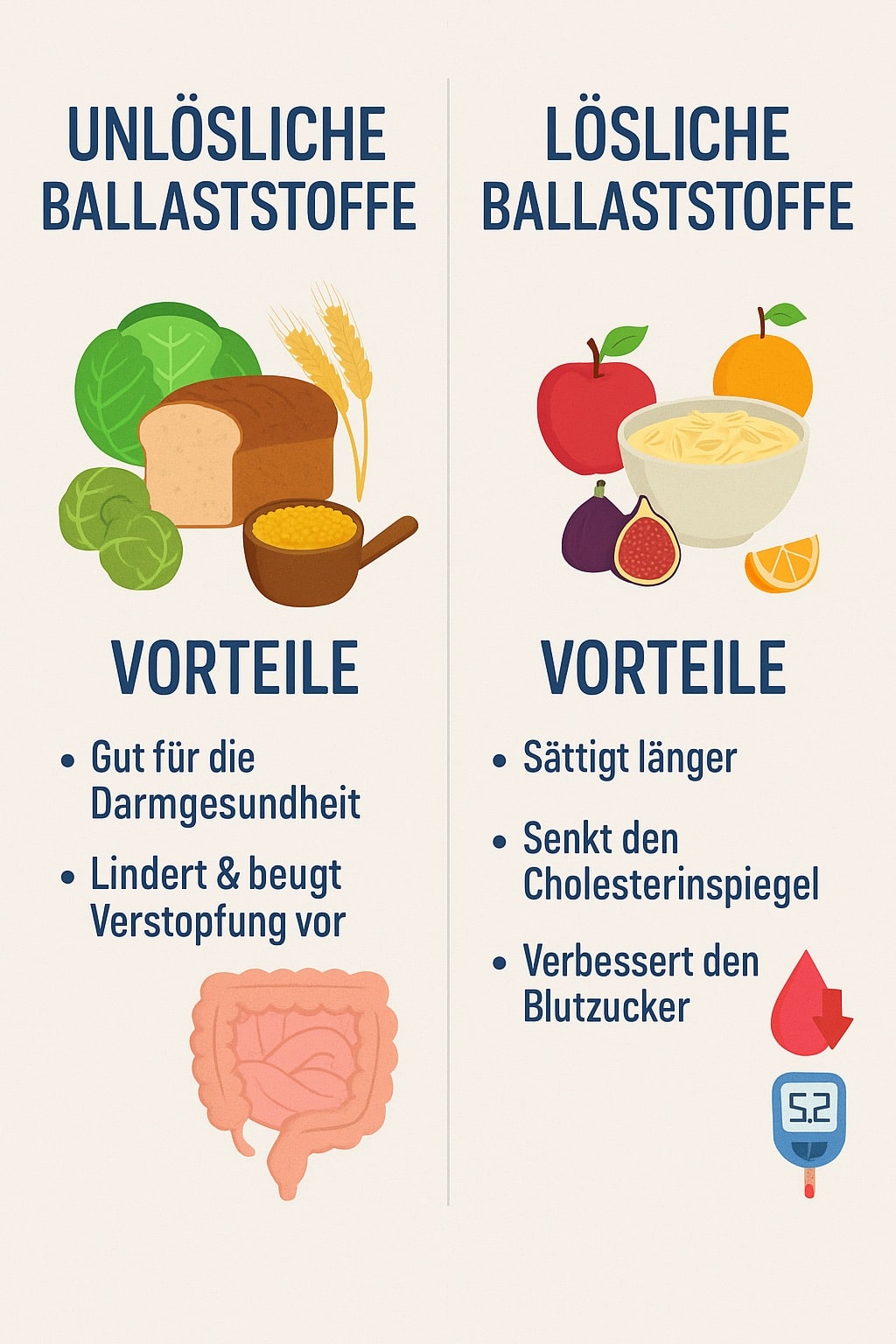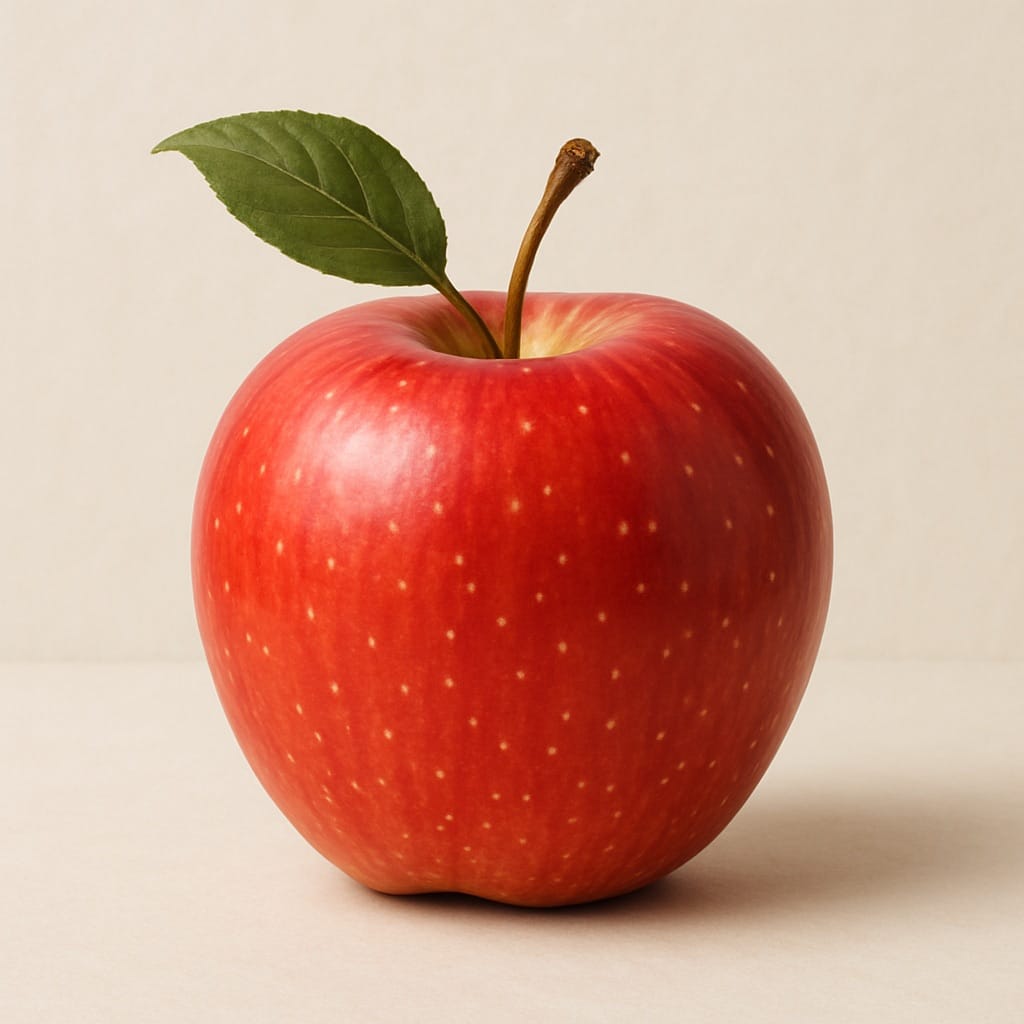Why your bacteria love dietary fiber and how it protects your body
Everyone is talking about dietary fiber. The entire lifestyle and nutrition industry suddenly seems to be focusing on the small plant fibers, even though they have been in our diet since time immemorial. But rightly so! Because new scientific findings show a sophisticated interaction with our microbiome and gut and reveal surprising health effects.
Dietary fibers are natural fibers, mostly carbohydrates, which are not broken down by human enzymes in the small intestine. For this reason, they reach the large intestine undigested. This is the main reason why they can work at all. This is where they serve as food for our bacteria.
Although they are not essential for humans, their many health benefits make them indispensable for a healthy diet.
Where is fiber found?
They are mainly found in plant-based foods such as vegetables, fruit, cereals, pulses and nuts. A rare exception is the animal polysaccharide chitin.
There are two main groups:
Soluble fibers: e.g. inulin from chicory or pectin from fruit.
Insoluble fibers: e.g. cellulose from bran.

Viscosity is also important, as non-viscous, soluble fiber is usually completely fermented by the intestinal flora.
Viscous and insoluble fibers, on the other hand, are often not or only partially broken down and perform important mechanical tasks.
Why do the bacteria need to be fed with fiber?
In the large intestine, the “good” bacteria are waiting for replenishment. They produce particularly useful short-chain fatty acids (SCFA), above all butyrate, propionate and acetate.
Butyrate, or butyric acid, has an extremely beneficial effect on the cells of the human intestinal mucosa and serves as an important source of energy. It keeps the intestinal wall stable and prevents the connections between the cells (tight junctions) from becoming brittle. This protects against “leaky gut” syndrome, in which bacterial components can enter the bloodstream and trigger silent inflammation.
However, heart problems can also occur in the event of severe barrier disorders, such as those caused by medication or extremely poor nutrition, as bacteria can then also cross over, reach the heart with the blood and promote systemic inflammatory reactions that put a strain on the heart and blood vessels. An intact mucous membrane therefore also protects the heart.
In general, short-chain fatty acids create an environment that promotes particularly good bacteria, the SCFA formers.
The pH value is also lowered, which means that harmful putrefactive bacteria are displaced in the large intestine and fewer toxic substances are formed.
Can the good bacteria be fed differently?
Soluble food components such as sugar are usually absorbed early in the small intestine and do not reach the good bacteria in the large intestine. If nutrients such as short-chain sugars do reach the large intestine, they mainly encounter bacterial groups that prefer rapidly fermentable substrates and are therefore selected.
The beneficial bacteria can be found throughout the large intestine, but the key butyrate producers are mainly concentrated at the back. And this is exactly where the dietary fiber ends up, because many of the undesirable bacteria cannot use these complex fibers at all. So the right bacteria get the right food.
Microbiome-independent effect of dietary fiber
Dietary fibers not only act via bacteria, they are also physical tools for your digestion. There are two counterparts here that have to work together perfectly:
The brake
Swellable, viscous fibers (pectin or beta-glucans) dissolve in water and form a gel-like mass. They thicken the chyme and reduce the transit speed, i.e. the speed at which it passes through the stomach and small intestine.
This has several effects:
Blood sugar:
The sugar from food enters the bloodstream more slowly. Insulin peaks are avoided.
Satiety
The slower transit time triggers hormonal signals in the last section of the small intestine, which reduce gastrointestinal motility and release satiety hormones such as GLP-1 (glucagon-like peptide 1) or PYY (peptide YY). Both are intestinal hormones that curb appetite and trick the brain into thinking we are full. Fiber is therefore the natural Ozempic here.
Cholesterol
In addition, the gel-forming dietary fibres in the small intestine can bind bile acids so that they are increasingly excreted in the stool. This has the positive effect that the body has to use more cholesterol to synthesize new bile acids, thus lowering the cholesterol level.
Oat flakes, apples, linseed, psyllium and pulses contain swelling viscous fiber.
The accelerator
Insoluble, coarse fibers (e.g. cellulose) are hardly digested and absorb water like a sponge without dissolving. As a result, they swell up considerably and increase the stool volume.
Intestinal movement
The mechanical pressure on the intestinal wall stimulates peristalsis, the muscular movement of the intestine.
Detoxification
The faster transit time in the large intestine prevents constipation and potential pollutants or carcinogenic substances also have shorter contact with the intestinal mucosa.
Rubbing iron effect
In addition, the mechanical stimulation keeps the intestinal muscles active and fit.
Coarse and insoluble fibers are mainly found in wheat, bran, whole grain products, nuts and fruit and vegetable peelings.
It’s all about balance: Brake and accelerator
The balance of viscous, soluble fibers and insoluble, coarse fibers is important.
A healthy intestine needs the brake in the stomach/small intestine for nutrient absorption and the accelerator in the large intestine for effective elimination.
3 practical tips for the perfect mix:
TIP 1: The “apple principle”

z. e.g. apples, pears, cucumbers, young potatoes
The brake: The pulp (inside) usually provides the soluble fibers (pectin).
The accelerator: The peel (outside) usually consists of insoluble fibers (cellulose).
If you can, always eat apples with the skin on, because if you peel them, you throw away the accelerator and only keep the brake. However, it is important to use organic produce wherever possible and to wash them thoroughly beforehand to avoid eating any pesticide or fertilizer residues.
TIP 2: The king of breakfast: oatmeal

The brake: oat flakes. They are the kings of soluble fiber (beta-glucan). They make the porridge slimy/creamy.
The accelerator: Add nuts, seeds or wheat bran. These remain crunchy and provide the coarse structure.
TIP 3: Pulses are all-rounders

Examples: Beans, lentils, peas or chickpeas
This food group is unique because it is naturally extremely rich in both types of fiber.
The brake: The soft inside of the bean provides food for the bacteria.
The accelerator: The firmer outer skin of the bean provides volume.
Important: No water, no effect!
Fibre is like a sponge:
Sponge + water: soft, slippery, cleansing.
Sponge without water: hard, dry, abrasive.
Eating lots of fiber and drinking little is a bad idea. The accelerator can have the opposite effect and become a “concrete brake”. Therefore, drink a large glass of water with every high-fiber meal.
Medical effects of dietary fiber: What do the studies say?
Dietary fiber has many positive medical effects on the body.

Glycemic control
As seen above, the soluble viscous fibers help to improve glycemic control and lead to lower blood sugar spikes. As a result, the long-term blood glucose HbA1c can be lowered. In studies, a reduction of 0.63 percentage points was observed, e.g. from 7.5% to 6.9%.
Insulin resistance can also improve significantly. The HbA1c is the hemoglobin A1, which can be glycosylated by the sugar, so that in medical diagnostics the HbA1c is a good indication of the blood sugar level load of 8-12 weeks.
Body weight and satiety
Fiber can support weight management by increasing satiety and thus reducing calorie intake. In addition, foods with a high fiber content are usually lower in energy because they have a lot of volume and few calories and therefore require intensive chewing, which slows down food intake.
In addition, fiber contributes to satiety by stretching the stomach, leading to delayed gastric emptying and also causing hormonal signals that affect satiety.
Blood pressure
Dietary fiber can also have a positive effect on blood pressure in the long term. This happens indirectly by improving weight, insulin sensitivity and vascular function. Studies have shown an average reduction in systolic blood pressure of around 1.4 mmHg and a reduction in diastolic blood pressure of 0.7 mmHg. This may not seem like much, but even a 2 mmHg reduction in systolic blood pressure is associated with a noticeably lower stroke rate in the population.
Heart attack, stroke and diabetes
People who eat a lot of fiber are less likely to have cardiometabolic diseases. Studies show that higher fiber intakes were associated with a 15-30% lower rate of serious chronic diseases.
Diverticulosis, intestinal inflammation and bowel cancer
Dietary fiber supports intestinal health and can prevent certain intestinal diseases. Diverticulosis, painful protrusions of the colon wall, occurs less frequently in people with a high fiber intake. Studies show that there is an inverse relationship between the amount of fiber and colon cancer. A risk reduction of 23% has been reported for rectal cancer.
Dietary fiber also appears to improve chronic inflammatory bowel diseases such as Crohn’s disease and ulcerative colitis, as it has an anti-inflammatory effect through the formation of short-chain fatty acids.
How high should the daily fiber intake be?
The recommended amount of fiber per day is 30 grams. However, care should be taken not to increase the fiber too quickly, as this can lead to flatulence, bloating or abdominal cramps. An increase should always be gradual over a few weeks and accompanied by plenty of fluids.
Be aware that very high amounts of more than 50 or 60 grams per day are not directly harmful, but can slightly reduce the absorption of some nutrients such as calcium or iron and can also affect the absorption of medication.
Studies have shown that meals high in fiber can lower the levels of levothyroxine (thyroid hormone) in the blood if taken at the same time. A time interval of at least 2-3 hours should therefore always be observed, as otherwise the active ingredient is bound and excreted.
Food or powder?
Many manufacturers now offer fiber supplements. In principle, there is nothing wrong with this. The food always has the advantage that in addition to the mixture of different fiber types, vitamins, minerals and secondary plant substances are also present. Although studies have also shown positive effects with isolated fiber supplements, the nutritional matrix is decisive.
In principle, fiber supplements can be used, but should always be combined with food. Whole foods are ideal for your health.
Variety is the key to keeping the bacterial composition in the large intestine as diverse as possible.
List of sources
Capuano E. The behavior of dietary fiber in the gastrointestinal tract determines its physiological effect. Critical Reviews in Food Science and Nutrition. 2017;57(16):3543–3564.
D’Alessandro C, Benedetti A, Di Paolo A, Cupisti A. Interactions between food and drugs, and nutritional status in renal patients: a narrative review. Nutrients. 2022;14(3):521.
Ghavami A, Banpouri S, Ziaei R et al. Effect of soluble fiber on blood pressure in adults: a systematic review and dose-response meta-analysis of randomized controlled trials. Nutrition Journal. 2023;22:51.
Hu J, Wang J, Li Y, Xue K, Kan J. Use of dietary fibers in reducing the risk of several cancer types: an umbrella review. Nutrients. 2023;15(11):2545.
Jovanovski E, Yashpal S, Komishon A et al. Effect of psyllium (Plantago ovata) fiber on LDL cholesterol and alternative lipid targets: a systematic review and meta-analysis of randomized controlled trials. American Journal of Clinical Nutrition. 2018;108(5):922-932.
Moayyedi P, Quigley EM, Lacy BE et al. The effect of fiber supplementation on irritable bowel syndrome: a systematic review and meta-analysis. American Journal of Gastroenterology. 2014;109(9):1367–1374.
Reynolds A, Mann J, Cummings J et al. Carbohydrate quality and human health: a series of systematic reviews and meta-analyses. Lancet. 2019;393(10170):434–445.
Aune D, Sen A, Norat T, Riboli E. Dietary fibre intake and the risk of diverticular disease: a systematic review and meta-analysis of prospective studies. Eur J Nutr. 2020 Mar;59(2):421-432.
Singh V, Lee GD, Son HW et al. Butyrate producers, “The Sentinel of Gut”: their intestinal significance with and beyond butyrate, and prospective use as microbial therapeutics. Frontiers in Microbiology. 2023;13:1103836.
van der Schoot A, Drysdale C, Whelan K, Dimidi E. The effect of fiber supplementation on chronic constipation in adults: an updated systematic review and meta-analysis of randomized controlled trials. American Journal of Clinical Nutrition. 2022;116(4):953-969.
Xie Y, Gou L, Peng M, Zheng J, Chen L. Effects of soluble fiber supplementation on glycemic control in adults with type 2 diabetes mellitus: a systematic review and meta-analysis of randomized controlled trials. Clinical Nutrition. 2021;40(4):1800–1810.



